SmoothQuant and AWQ
GO through LLM Quantization technologies, mainly from Han’s group in MIT
0 Quantization basic
Quantization is nothing more about scaling. After getting the range of the original FL32 data, by calibration, we scale down the data and remap to a low bits range. \(Q(w)=\Delta*Round(\frac{w}{\Delta}) \\ \Delta= \frac{\max{(w)}}{2^{N-1}}\) Another concept is activation, which is actually input $X$ instead of activation functions. In $Q=W_qX$, $X$ is the activation of weight $W_q$
1 SmoothQuan
Han introduced this method in this video and zhihu and paper are very helpful as well.
One formula explained all
$Y=(Xdiag(s)^{-1})(diag(s)W)=\hat{X}\hat{W}$
The key challenge is that activation has larger dynamic range and hard to quantize.
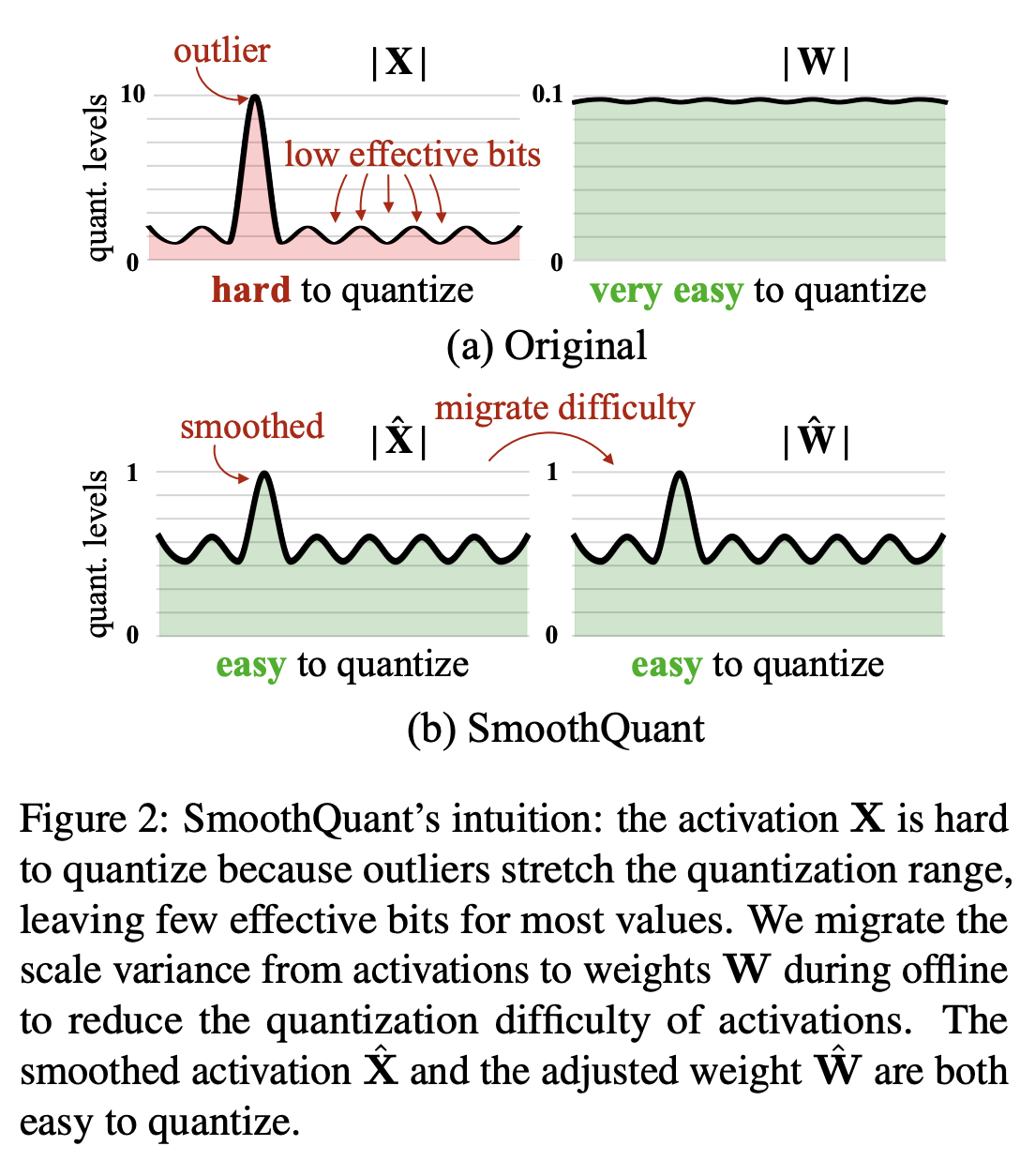 So instead of per-tensor quantization, we can consider per-token and per-channel quantization.
So instead of per-tensor quantization, we can consider per-token and per-channel quantization.
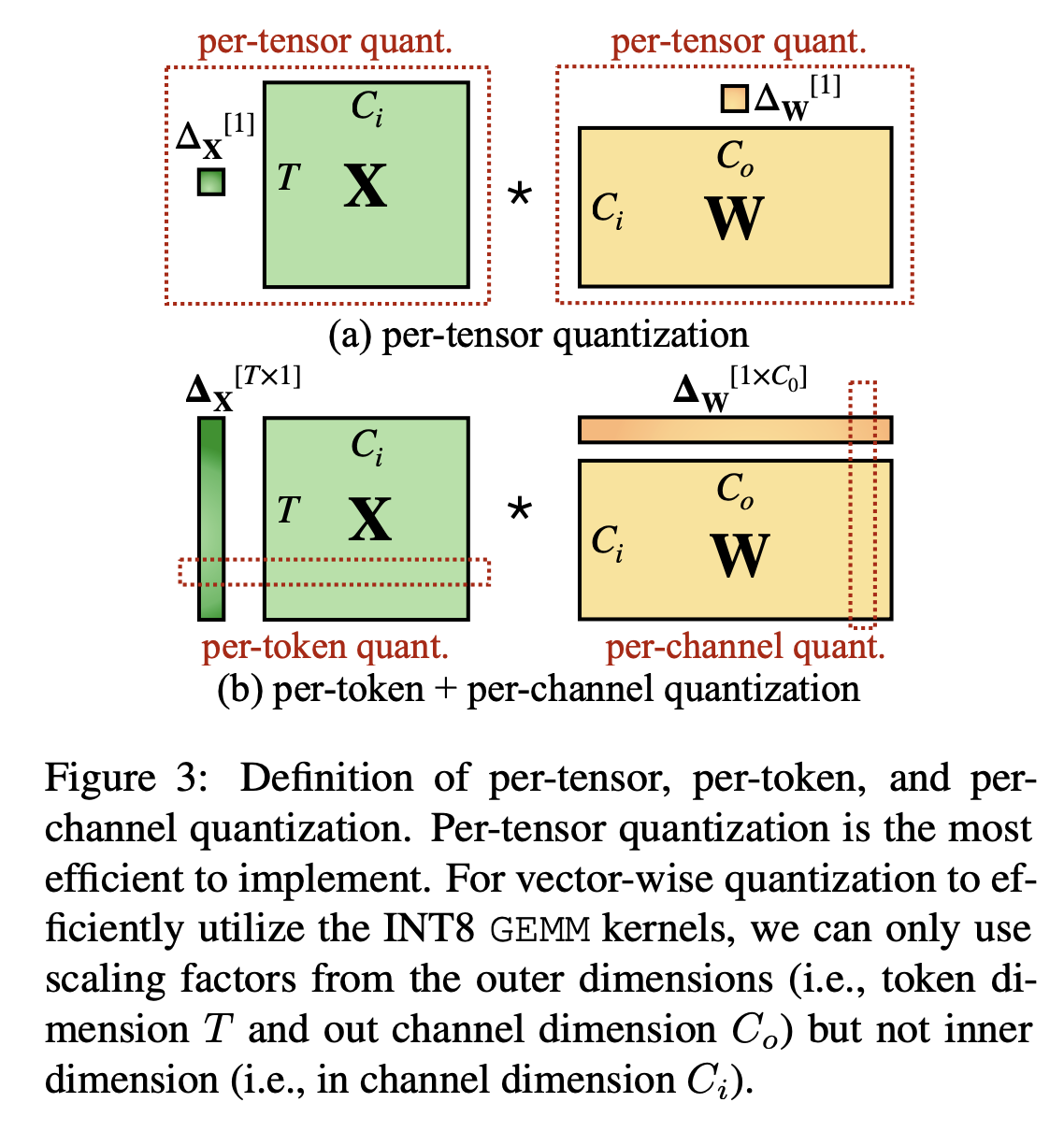 The outliners are mainly concentrated in certain channels. So we can shift them into weights.
The outliners are mainly concentrated in certain channels. So we can shift them into weights.
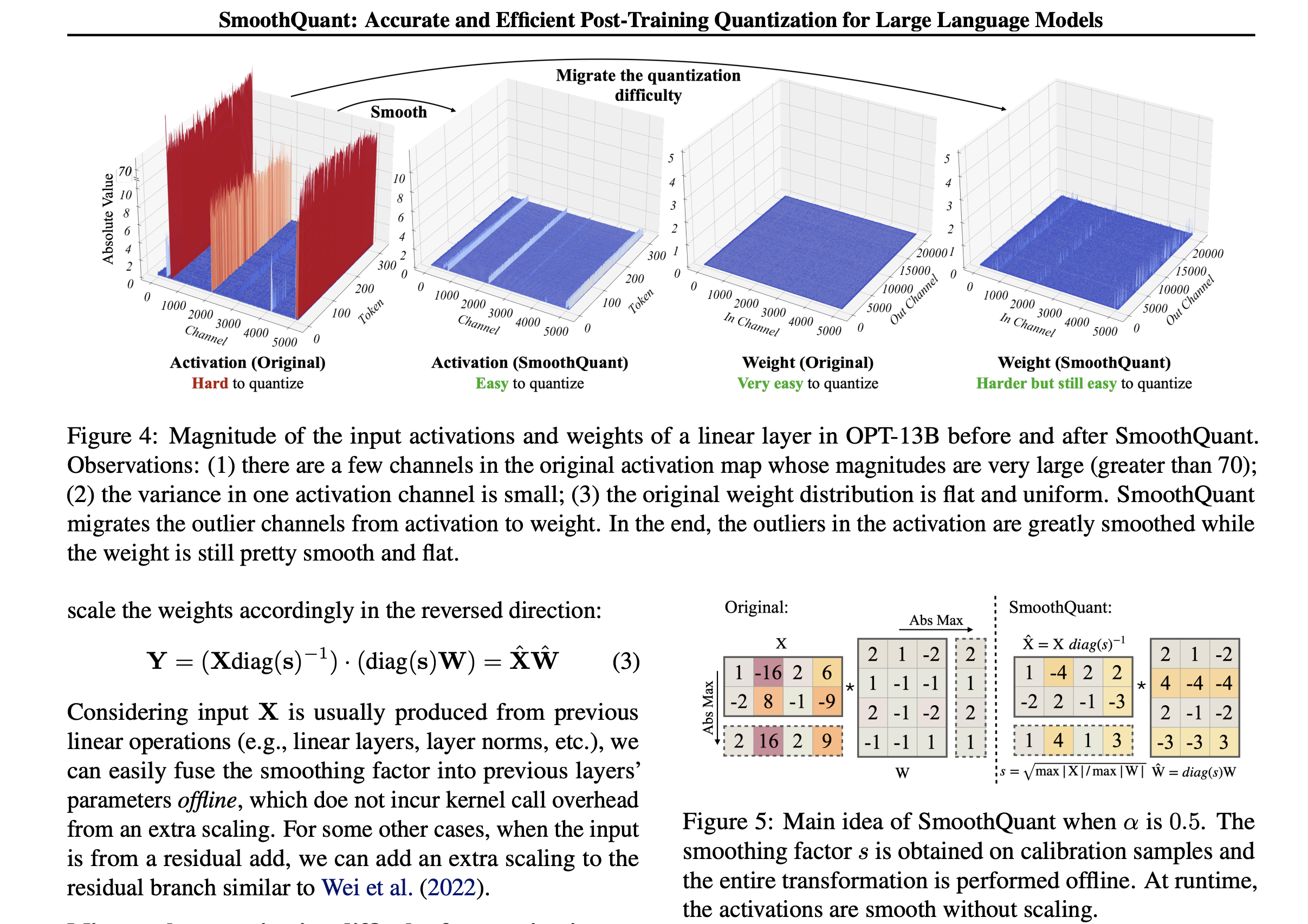
2 AWQ
This is 4-bit quantization also from Han’s group, and here are Han’s talk, zhihu(really good explanations), and paper
The goal is to get weight only quantization for single-batch LLM performance. (W8A8 is only good for batch serving and not enough for single-query LLM inference)
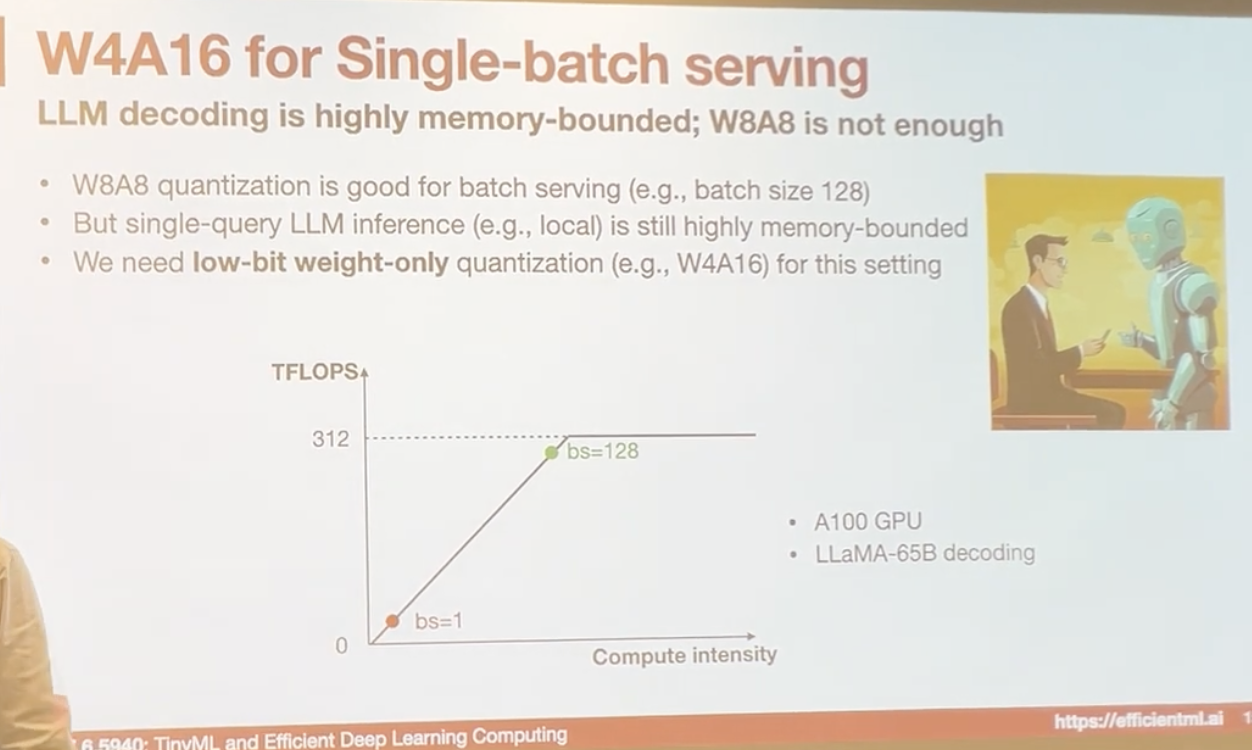
-
Only 1% of salient weight is important for the results. and the paper found out choosing the salient weight based on weight is similar to random choosing. So Activation-aware selection method is used.
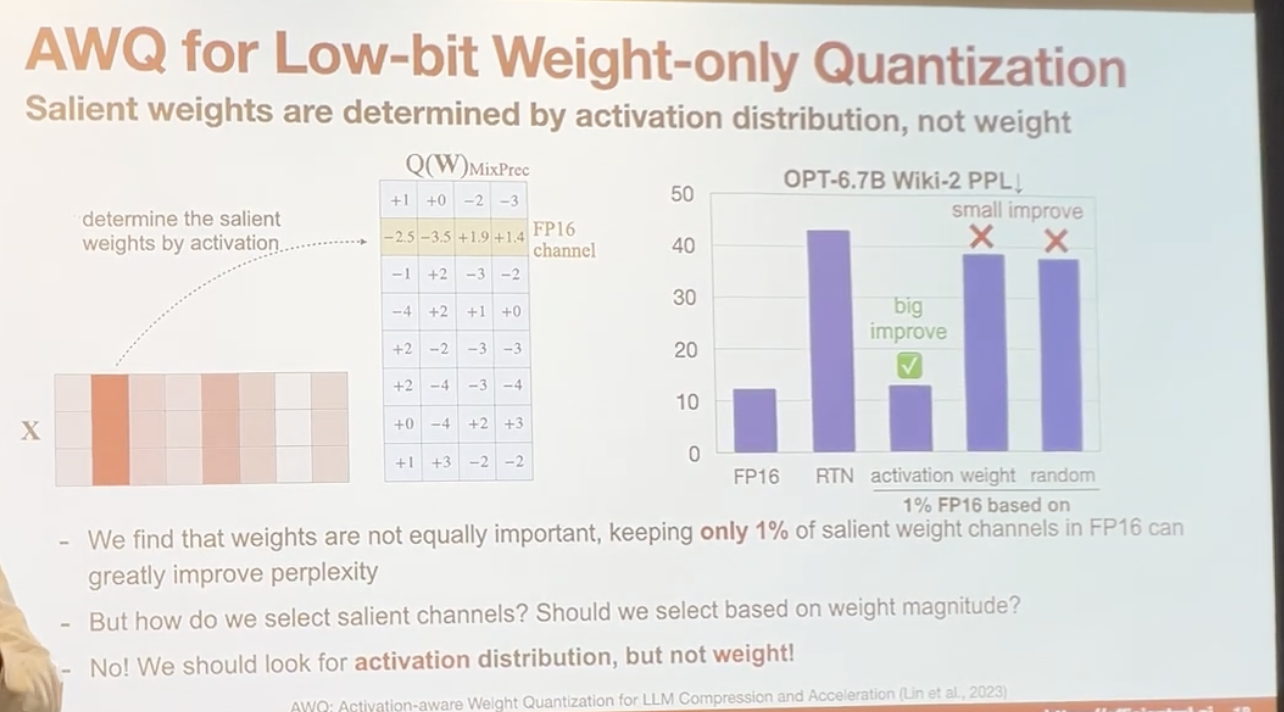
-
The paper noticed that scale up the salient weight and reduce the quantization error, which is a key contribution. Here is the induction: Similar to SmoothQuan, we can scale up weight and scale down the activation
\(Q(w*s)x/s=\Delta^\prime*Round(\frac{w*s}) \\ \Delta^\prime=\frac{\max{(w*s)}}{2^{N-1}}\)
Based on empirical findings, the error is propotional to $\frac{1}{s}$
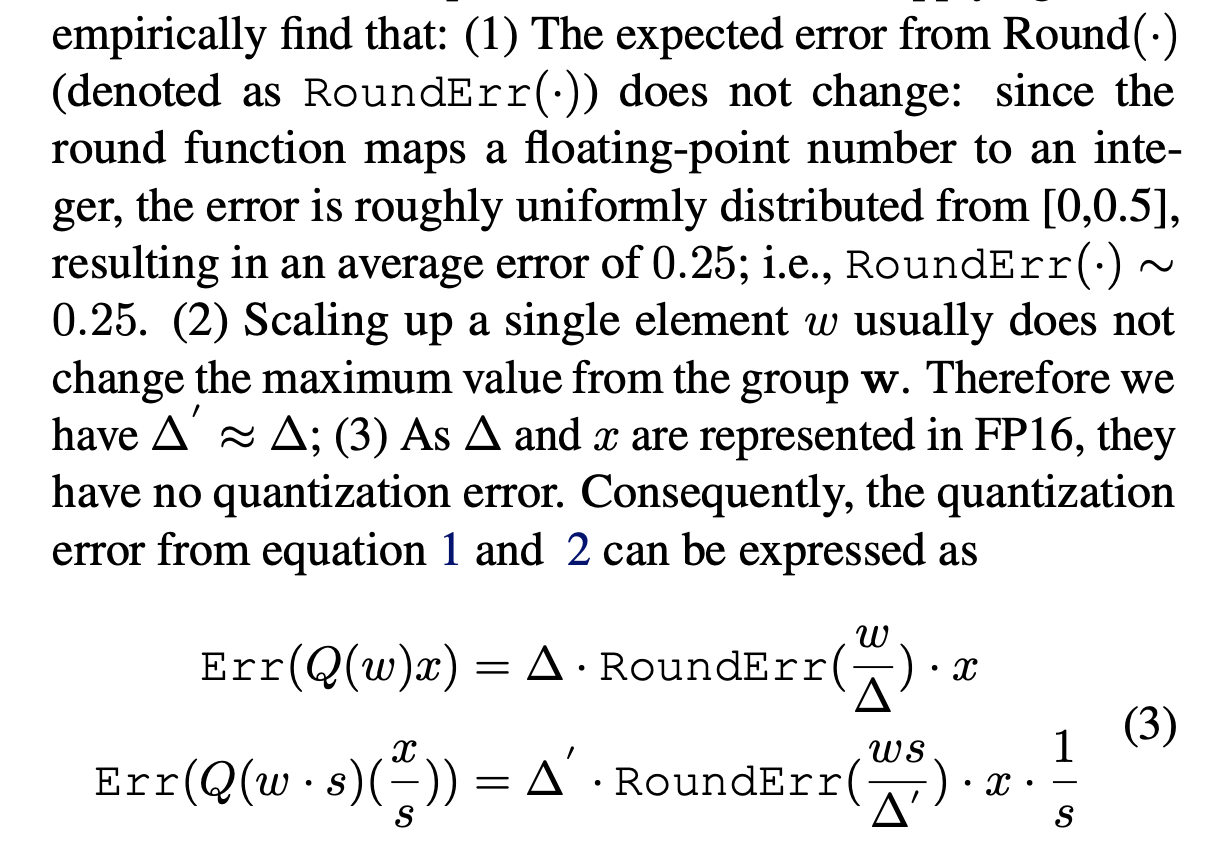 and a test shows s=2 gives the best result while larger s would increase non-salient weight error
and a test shows s=2 gives the best result while larger s would increase non-salient weight error
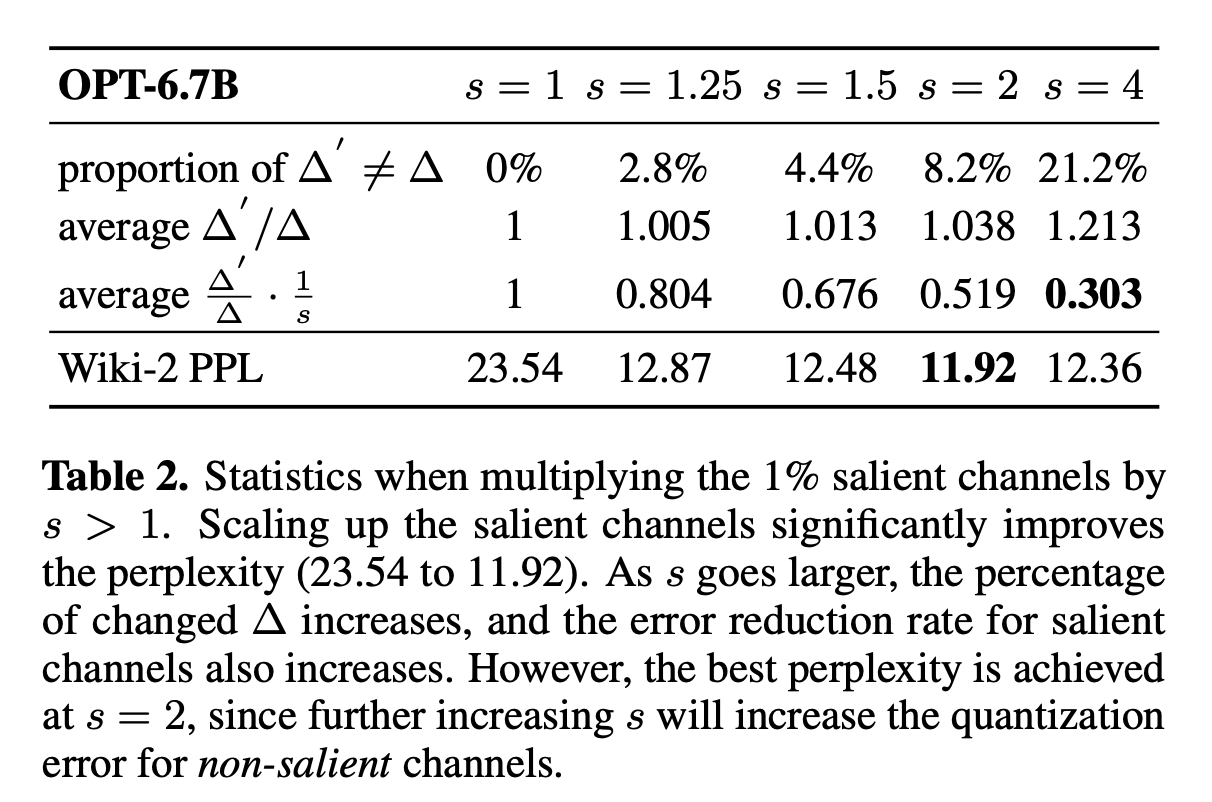
- The calculation of the scaling factor can NOT use SGD due to round functino is not differentiable. A grid search is used here for a simplied factor $\alpha$ The source code can be found here
n_grid = 20
history = []
org_sd = {k: v.cpu() for k, v in block.state_dict().items()}
for ratio in range(n_grid):
ratio = ratio * 1 / n_grid
scales = x_max.pow(ratio).clamp(min=1e-4).view(-1)
scales = scales / (scales.max() * scales.min()).sqrt()
You can see that the ratio $\alpha$ is searched between 0 and 1 with a step of 0.05. and another scaler is added $s = \frac{s}{\sqrt{max(s)min(s)}}$
group_sizeis a hyperparameter used to share $\alpha$ between number of channels. It’s also shows asINT3_group128which means 128 channels shares a same scaling factor
So here is the summary of the process
